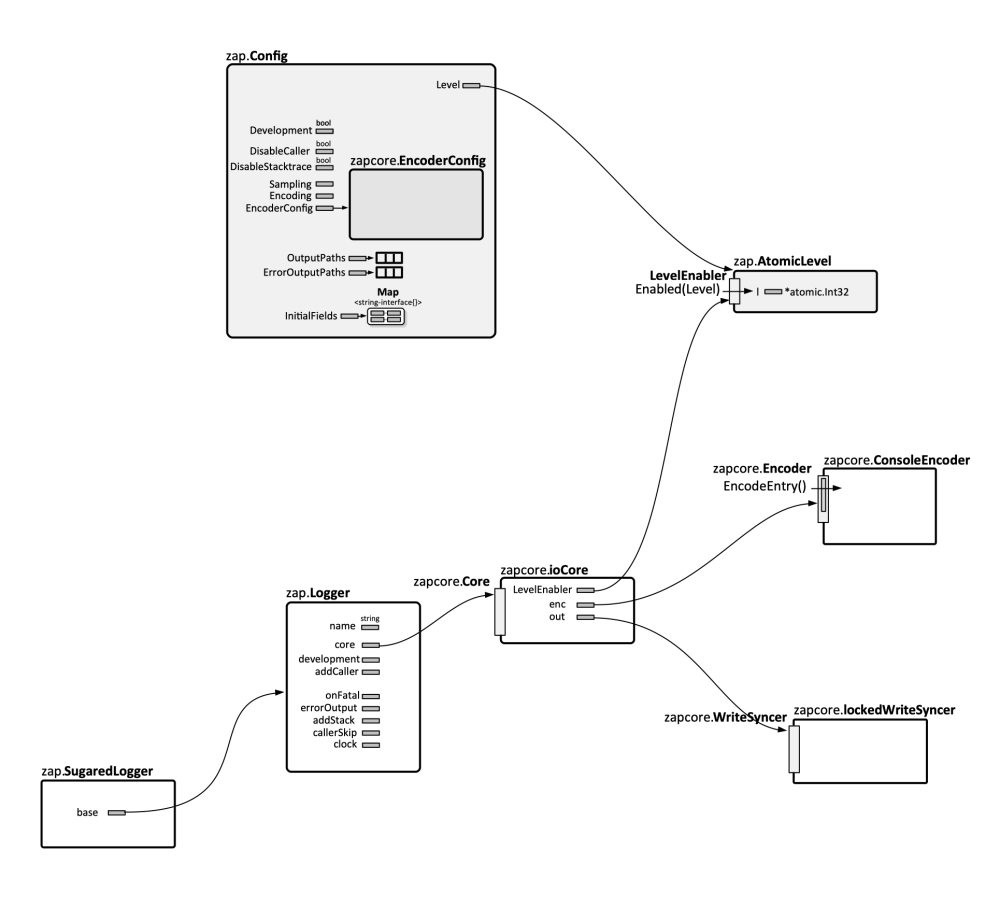Zap Concepts
External
- https://betterstack.com/community/guides/logging/go/zap/
- https://blog.stackademic.com/elevating-your-application-monitoring-golangs-logging-best-practices-7107d57c1fc5
Internal
TODO
- Deplete from Zap_Concepts_TODEPLETE
- I might need to get rid of parts of https://kb.novaordis.com/index.php/Zap_Programming_Model_and_Operations
Overview
Zap is a logging framework for Go. It provides fast, structured, contextual and leveled logging.
Logging is performing by creating a Logger object and using its API. Creation of Logger instances can be done in a number of way that are explored in the Logger Instance Creation section. There are actually two APIs, Logger and SugaredLogger. The former is aimed for high-performance scenario, but it only supports structured logging, while the latter has a more friendlier, and just slightly less performant syntax. The difference is discussed in Two Logging APIs section.
Each logging invocation creates a log event with key/value pairs, as explained in Structured Logging. The rendering of the log events can be changed through configuration. These aspects are discussed in the Log Rendering section.
There is no global logger that can be used right away, though one can be configured. Use of global loggers should be avoided, though.
Zap supports the standard DEBUG, INFO, WARN and ERROR logging levels. It comes with a few new ones: PANIC, DPANIC and FATAL. The ERROR level requires special attention. There is no TRACE. More details are available in the Logging Levels section.
By default, loggers are unbuffered. This aspect is discussed in the Buffering section.
Implementation aspects are discussed in Implementation Details.
Child loggers.
Logger Instance Creation
The framework comes with three preset constructors: zap.NewExample(), zap.NewProduction() and zap.NewDevelopment(). Each of these constructors internally create a logging core and set its encoder, output and level. These components are configured according to the type of logger. In case of an example logger. In case of a production logger. In case of a development logger. These instances are OK if their configuration matches the use case. However, custom-configured instances can be created via two other methods.
- Understand how I can get a logger instance “out of the blue” and how I can build a set of predefined loggers. Must figure out logging situation in tests. I must be able to start a test in debug mode and see the log.
- Can I use a single instance? Is it thread safe?
Two Logging APIs
Structured Logging
Each logging invocation creates a log event. Zap calls these events log entries. The log entries are implemented as zapcore.Entry struct instances, so each carry by default the structure's fields: logging level, timestamp, logger name, message, caller and stack.
which carries an arbitrary number of key/value pair fields. Each entry represents a complete log message.
What about the log message?
Also see
Log Rendering
The external representation of a log entry is produced by an encoder. The default encoder generates JSON structures, where the log entry's fields are represented as JSON map elements.
Logging Levels
Internally, the logging level are implemented as constants (zap.DebugLevel, zap.InfoLevel, zap.WarnLevel, zap.ErrorLevel, zap.DPanicLevel, zap.PanicLevel, zap.FatalLevel).
Custom Logging Levels
Configuration
Buffering
Other Subjects
Implementation Details
Each zap.Logger wraps around a core, which is configured with an encoder, an output and a logging level:
An encoder is the component that renders the external representation of the log entry instances. The default encoder is a JSON encoder, which renders entries as JSON structures. The encoder instance can be configured with a zapcore.EncoderConfig structure.
zap and zap core.
Best Practices
Sharing or not sharing logger instances?
